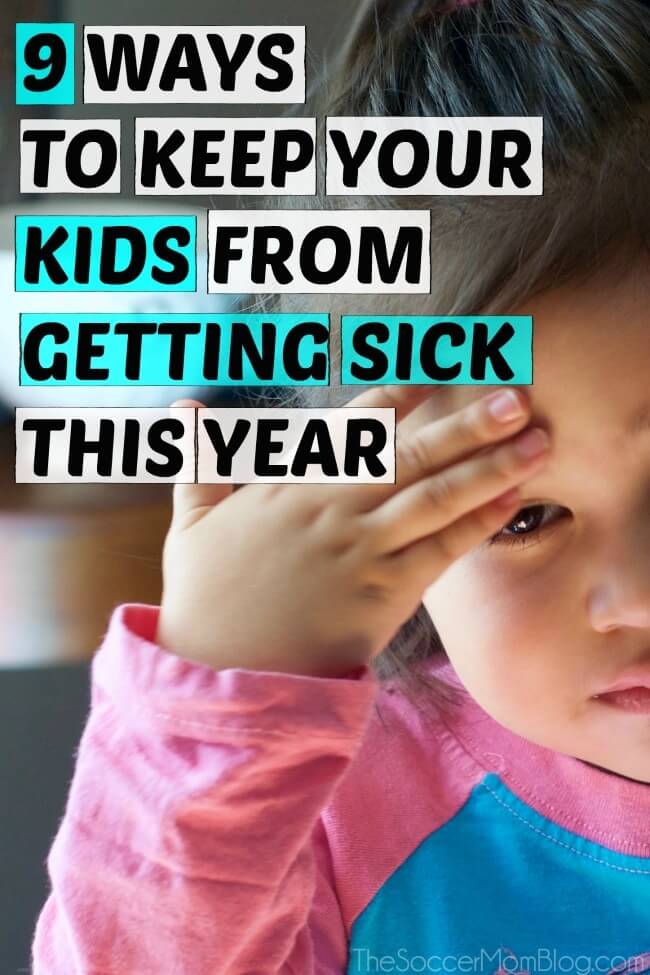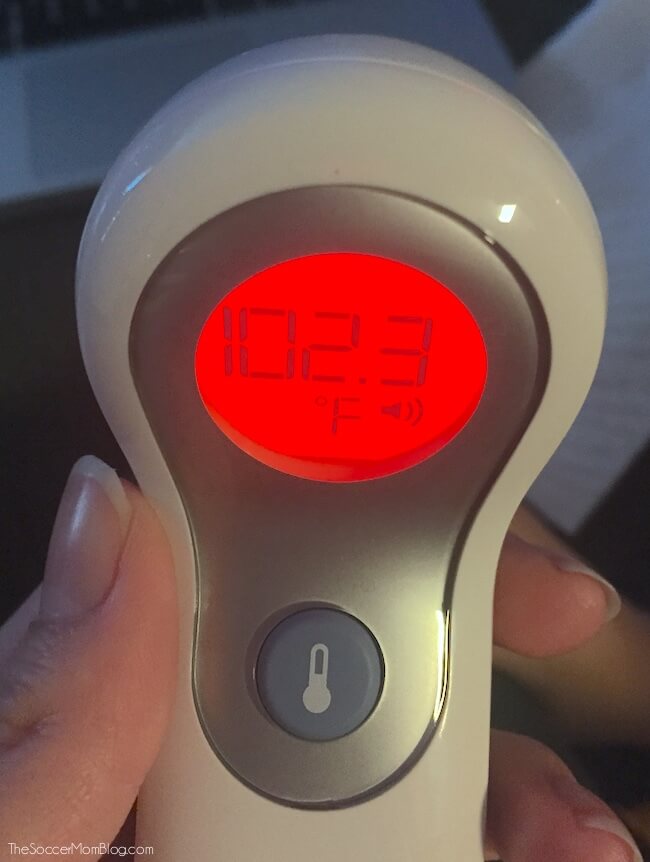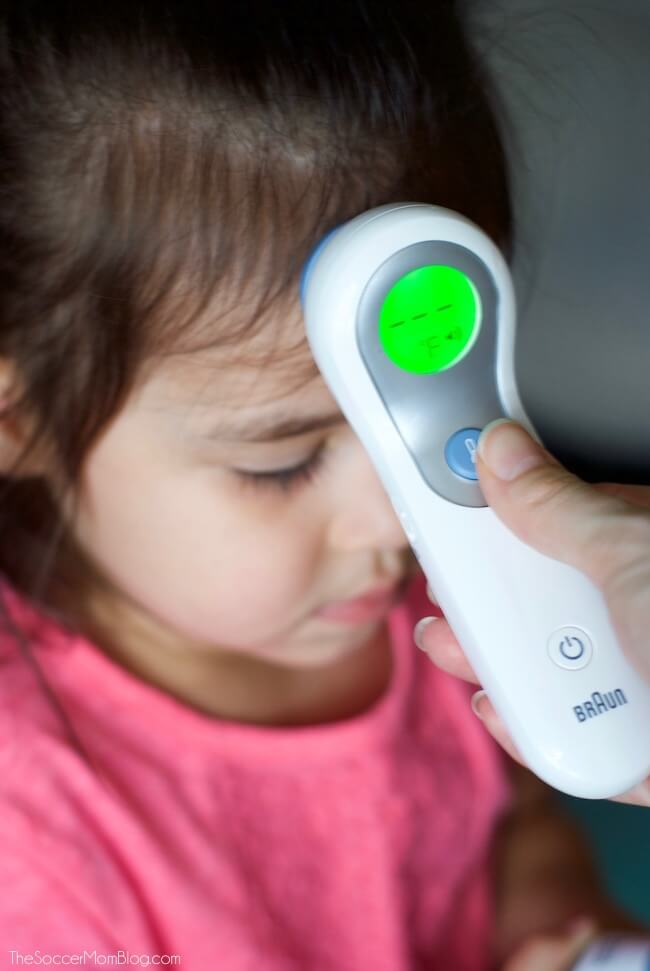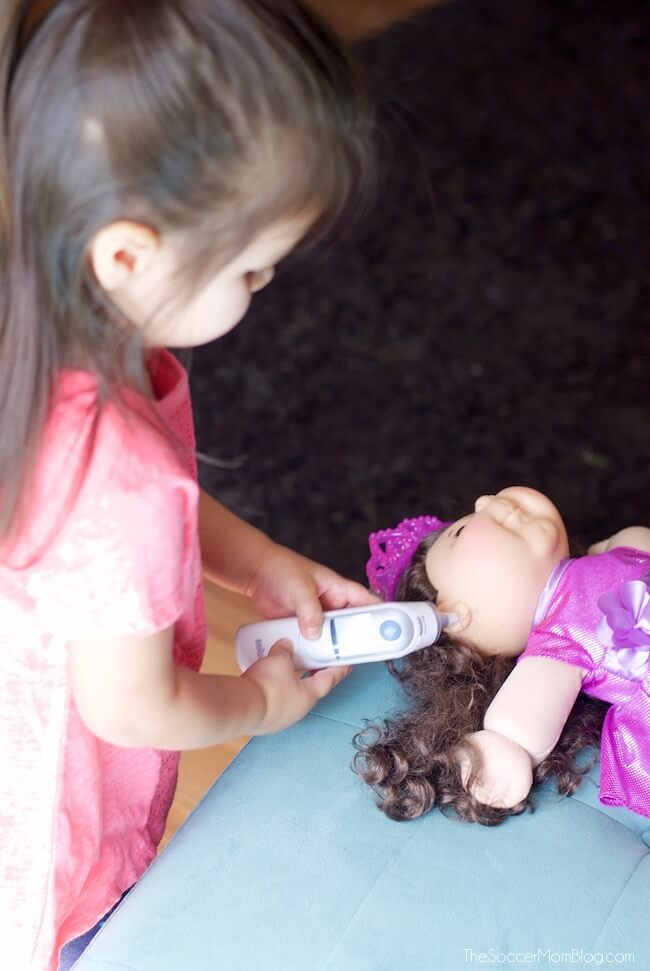Inside: 9 Surprisingly simple flu prevention tips that can help keep your kids from getting sick this winter. Sponsored by Braun.
One of the toughest things as a parent is watching your kids get sick — it makes you feel helpless to see them miserable!
If there were things you could do to minimize your child’s chance of catching a cold or the flu, of course you’d do them. The good news — there are quite a few relatively easy steps you can take to build your child’s immune system and help protect them during cold and flu season.
If you’ve ever known a person who rarely gets sick, chances are they do most of these things. Growing up, I was fortunate to rarely miss school for a cold, so I can attest that they work!
9 Flu Prevention Tips to Keep Your Kids from Getting Sick
Keep reading for a list of surprisingly simple ways to “winterize” your home and family during cold and flu season!
1. Make sure they get plenty of sleep
Sleep is the time when our bodies rest, recover, and build up defenses against the constant barrage of germs we come in contact with every day. Skimping on sleep means that our bodies have less time to heal and prepare.
Kids need more sleep than adults, in fact, the average elementary school student should be getting 9-12 hours a night! (See the current child sleep recommendations here).
So the next time your child complains at bedtime, you can tell them that you’re helping them stay healthier!
2. Feed them a balanced diet
It shouldn’t come as much surprise that healthier foods create healthier bodies.
Be sure to incorporate as many fruits and vegetables into your family meals as possible (you can never have too many!) Protein, “good” fats, whole grains like quinoa (also a source of protein), and a daily multivitamin can also bulk up your child’s defenses.
PS – There is the common misconception that Vitamin C can prevent or cure a cold (it won’t). However, studies show that Vitamin C can shorten the length of some colds1, and that’s still pretty awesome!
3. Stay active
In both kids and adults, regular daily exercise is shown to strengthen immune systems and even lower the chance of getting a cold.2
Whether it’s participating in a team sport, or taking an evening walk around the neighborhood as a family, encouraging your kids to stay active will make their bodies stronger both inside and out!
4. Wash hands. All day long.
One of the ways colds and the flu are spread is by contact — either touching a person who is infected, or a surface that has germs on it.
The first and best line of defense is washing hands thoroughly. Here’s how to do it properly:3
- Wet hands and apply soap.
- Thoroughly lather hands by rubbing together, taking care to clean all surfaces (including backs of hands, between fingers, and underneath fingernails).
- After scrubbing for at least 20 seconds, rinse well and dry with a clean disposable towel or air dryer.
Practice good hand-washing technique at home throughout the day so kids will remember when they’re at school.
5. Teach children not to touch their face.
Let’s face it, kids are going to touch things. They’re going to get dirty and they’re likely going to come in contact with plenty of germs.
The key is making sure those germs don’t enter the body! Teaching kids not to touch their eyes, mouth, and nose can help prevent infection between hand washings.
Realistically, kids are probably still going to touch their face and stick their hands in their mouth, but it’s worth a try!
6. Let them get dirty
This might seem counterintuitive, but evidence shows that “dirty” outdoor play helps kids stay healthier for the rest of their lives.
Contact with a variety of bacteria at an early age builds our immune systems. Essentially, this is how our bodies learn how to fight off harmful microbes.
So go ahead and let them play in the mud, just be sure to wash everyone’s hands afterwards.
7. Use a humidifier
A humidifier is a device that puts moisture back into the air, usually through a mist. Using a humidifier in the home combats the dry air created by central heating systems during winter months, which can irritate and dry out the skin, throat, and nasal passages.4
We love to use an aromatherapy mister at night with a couple drops of peppermint oil. This is our little trick for helping everyone breathe better while they sleep!
8. Look out for symptoms of the flu
Symptoms of a cold and the flu are often similar. However, symptoms of the flu are usually more severe and develop more rapidly.
Fever is one of the most common symptoms to watch out for — as an elevated temperature is one way that our immune system protects and defends our bodies.
Taking your child’s temperature has never been easier with the Braun No touch + forehead thermometer. It’s my go-to at home because you get an accurate reading in 2 seconds by simply touching your child’s forehead. It is even sensitive enough to take your child’s temperature from up to two inches away or while they’re sleeping!
Another option, the Braun ThermoScan® 5 is proven more accurate than forehead or rectal measurement.** It’s also super easy to use, with one-touch operation and a pre-warmed tip that makes the experience comfortable for kids.
In fact, my youngest loves getting her temperature taken and to practice with her toys!
No wonder Braun is the #1 brand recommended by pediatricians!*
Both the Braun ThermoScan® 5 and Braun No touch + forehead thermometer are available at your neighborhood Walgreens.
More symptoms of a cold and/or the flu in children:5
- Chills
- Fatigue
- Body aches
- Coughing/sore throat
- Stomach pain and/or vomiting
9. If your child is sick, keep them home
If you think your child is coming down with a cold or the flu, it’s important to keep them from spreading the illness to their friends and classmates. According to the CDC, a person with the flu is contagious for up to the first 5-7 days of illness, and may even be contagious a day before symptoms are obvious.6
Also, if your child isn’t feeling well, giving them time to rest and recover at home may also help them recover faster.
You might also like:
5 Unusual Ways to Soothe a Sick Baby
Sources:
*Based on a survey reporting that of the surveyed pediatricians (1) who recommend a brand of thermometers, Braun is the most recommended; and (2) who use a branded thermometer, Braun is the most frequently used.
**Measurements in detecting temperature changes. Nimah, Marianne M., et al. “Infrared tympanic thermometry in comparison with other temperature measurement techniques in febrile children.” Pediatr Crit Care Med 7.1 (2006): 48-55.
1CNN — 2The New York Times — 3Mayo Clinic —4Healthline — 5WebMD
This is a sponsored conversation written by me on behalf of Braun Thermometers. The opinions and text are all mine.
- Paper Chain Octopus Craft - April 24, 2024
- Amish Sugar Cookies - April 19, 2024
- Marshmallow Playdough - April 18, 2024








